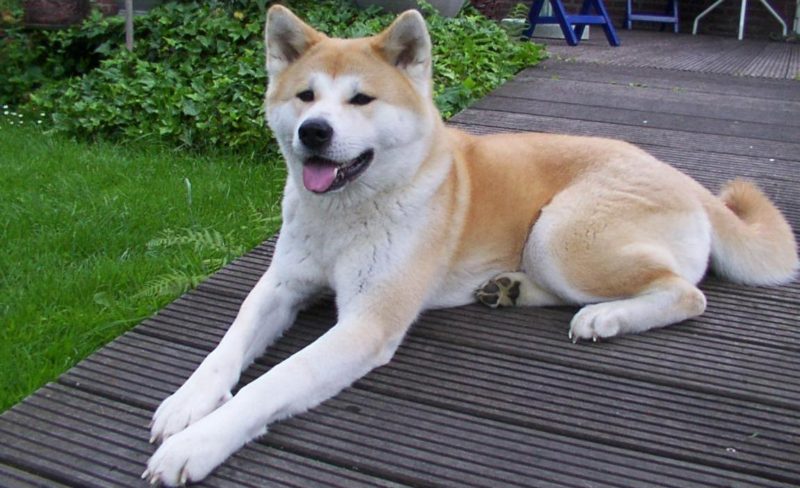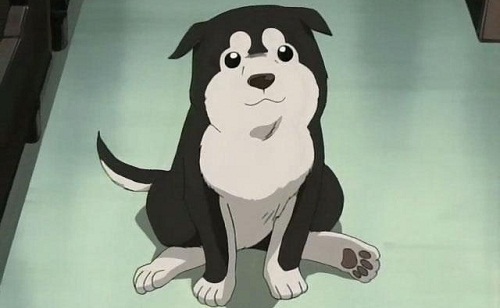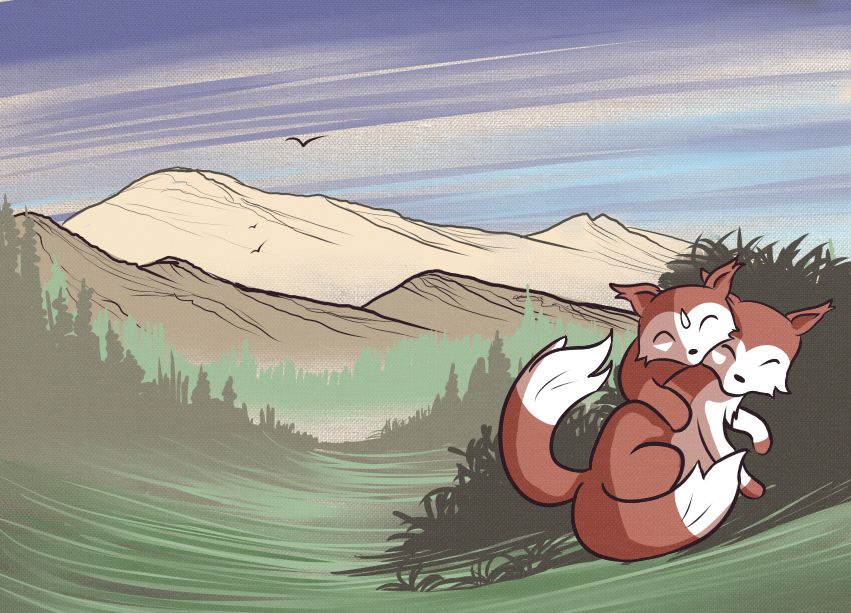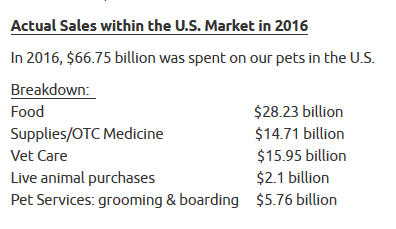
Most cultures have their own breeds of dogs. Dogs have provided us with companionship, protection, and help for thousands of years. Dogs were brought to the islands of Japan from China around 660 BC. But the Akita breed didn’t appear in documents until the early 17th century. A nobleman exiled to Akita Prefecture encouraged people to breed a strong hunting dog with superior intelligence and courage. The breed eventually took the name of the prefecture (Pflaumer, 1998).
At first, only samurai were allowed to own Akita. Leashes showed the owner’s social rank, and they used a special Akita language to train them. An emperor even issued and edict that required people to address the dog with honorifics. Samurai used Akita as guard dogs as to hunt deer, wild boar, bears, and waterfowl.
Akita would hunt bears in male and female pairs. The male would distract the bear while the female ran around and bit at its hocks until the hunter arrived to kill it (Thornton, 2011). Because of their dangerous prey, Akita don’t respond immediately like many other breeds. Instead, they prefer to assess the situation and then respond. This makes them sensitive to their owner’s thoughts and unspoken behavior (Pflaumer, 1998). They also don’t bark excessively; as deer hunters they have to be silent and attack without warning.
“The breed is a very primitive, wolf-type animal. The functions the Akita was developed to perform [i.e., hunting and fighting] are still evident in the breed’s dog-aggressiveness and instinctive hunting behavior when it comes to its interactions with other pets (Pflaumer, 1998).”
Although they aren’t scent-hunters, Akita can smell a deer between 200-300 yards away (Linderman, 1994). They adapt well to gunfire too.
Because of their close relationship to the wolf, Akita owners shouldn’t roughhouse with them. According to Pflaumer (1998), it can bring out their wolf nature and make the dog uncontrollable over time. As hunters, Akita also need a 30-minute walk twice a day to burn off their high energy. Luckily, food motivates them for training. However, they are known to hunt other small pets and dogs they haven’t grown up with, so owners need to be careful with training Akita.
Hachiko, the Loyal Akita

Among Akita, one dog’s story stands out. In fact, Hachiko’s story remains famous throughout the world. I’ll let the inscription from that Hachiko’s statue tell the story. This translation is from Linderman (1994):
Hachiko was born in Akita in November 1923. He was brought to Tokyo in January 1924 and was kept by Mr. Eisaburo Ueno, who then held the Chair of Professorship in the Department of Agriculture at the Imperial University.
Mr. Ueno was very kind to Hachi and the dog reciprocated in such a way that they become great friends. When Hachi grew up, he became a fine specimen of a large-size Japanese breed. He had a fine cream-colored coat with pointed ears and a curly tail, standing two feet tall and weighing 92 pounds.
It was Hachi’s custom to accompany his master every morning wet or fine to the Shibuya Station and wait for his return in the afternoon when the master and the dog would happily come home together.
This friendship lasted until lone day in May 1925. On that day, Hachi saw his master disappear among the crowd in the usual way at Shibuya Station, but that was the last he saw of him, for the master was taken ill while at work and died before he was brought home. The sad event occurred when Hachi was just over 16 months old, but Hachi never forgot his master. Hachi went daily after that to Shibuya Station, apparently in the hope of finding Mr. Ueno.
Sometimes he would stay there fore several days without returning home at all. The patient search lasted until March 8, 1934, when Hachi died on the very spot where he saw his master last. However, even before Hachi’s death, people who saw the pathetic figure of this faithful creature growing old day by day where so deeply moved by the sight that they decided to erect a statue in memory of this noble animal.
In April 1934, a beautiful bronze statue executed by the famous sculptor, Mr. Ando Teru, was erected in front of the Shibuya Station, but in 1945 this statue was regrettably taken down by order of the Army and was later melted down for use in making war weapons.
Soon after the end of the war a plan for re-erecting the statue was contemplated and it was then decided to entrust the making of the new statue to Mr. Ando Takeshi, the sun of Mr. Ando Teru, who unfortunately was killed in one of the air raids during the war.
The new statue is similar in size and shape to the old one and it will not doubt be instrumental in perpetuating the sweet memory of faithful Hachiko.
The statue has become a meeting place for teens and a symbol for faithfulness and devotion. Hachiko has inspired several films and stories, and he was even in attendance during the first statue’s unveiling.
The Akita is a unique Japanese breed that remained relatively unknown in the US until Helen Keller brought it to people’s attention in 1937. The breed had a brief period as a mixed fighting breed. And during World War II, people turned to Akita for food and fur out of desperation. Few breeds have such a strong association with our ideas of virtue, sacrifice, devotion, and loyalty as the Akita.
References
Linderman, Joan and Virginia Funk. (1994) The New Complete Akita. New York, Howell Book House.
Pflaumer, Sharon (1998) The awe-inspiring akita. Dog World 83 (2).
Street, M.R. (2011) Hachiko: Dog of Japan. Faces. 27 (9) 16-17.
Thornton, Kim Campbell (2011) Eastern Monument. Dog World. January. 30-35.






Cowboy is an 11 month old Akita Belgian malinoi mix he is the smartest dog that’s ever crossed my path my family has always had German shepherds since I was small and the difference is the Akita is much tougher than the Shepard someone broke into our home two months ago and cowboy woke me up I told him go see and layed back down because I didn’t think anyone would really be there and he left the room then I heard him screech and then I heard the man screaming and a loud bang then silence I grabbed my gun and went first to kitchen where I found an axe on the floor and the door wide open I went around the house and there was a car running in the driveway and cowboy had this guy in the floor by the back of his neck and he was screaming so loud and the dog was pulling him away from the car like a chew toy tugging on him long story short the guy went to jail for the home invasion my dog went for a ten day hold to be sure he wasn’t rabid and received vet care for the large cut on his head the guy hit him with the axe and the dog took three of his fingers and took him down before he could get back to his car at only ten months old he is the most loving intelligent creature on the planet and would die for our family and now if someone picks up and axe all he does is look up at me and his tail points straight back
Dogs make good defenders and caretakers, especially certain breeds like the Akita. We could learn from their selfless love!
I had a female Akita I rescued from a dog shelter and called her Tashika. She was mainly white with honey coloured splashes on her back and a bit between the ears on the top of her head. She was quite frankly stunning and had perfect confirmation. I was constantly amazed at how intelligent she was. I don’t think there was anything she didn’t get. She seemed to understand everything all the time. It was more like having a person around who couldn’t speak English and wore a fur coat. She had remarkable common sense and never barked unless there was a justifiable reason. She could easily find a way of telling you want she wanted or wasn’t happy with. She wasn’t savage with other dogs just very assertive. It was as if she was saying to them I’m the boss and you will acquiesce. If they weren’t deferring or trying it on with her she’d grab them around the neck in what I called the Tashi hold and pin them to the ground with a bit of a growl. It looked bad but was harmless. As soon as they “got it”, she’d let them up and they were unharmed albeit now under control. She was very strong. One day I was walking her and some dog was barking at her from behind a fence. Well, who knows what it was saying to her but she wasn’t having any of it and lunged at the fence ripping off the palings with her teeth to get at the upstart behind it. Luckily I’m strong too and managed to pull her away. Needless to say this is a dog for experienced dog handlers only. Put it this way, they’re not toy poodles. Having said all that, she could be very gentle and affectionate and appeared to love our nightly cuddles on the loungeroom floor. This is a dog that seems to attach itself to one person in the household and wants to be with you ALL the time. They’re a guard and they can’t guard you if they’re not with you. It’s one of the things they’re bred for. She had people figured out immediately. I quite frankly think she’s ruined me from getting any other dog. I can’t imagine anything else being so superb. Maybe a German Shepard? I don’t know, I haven’t had any other dog since her.
She sounds like a good dog. She definitely wants to be the matriarch of her pack!
If you get another breed you’ll regret it as much as you love that dog. It’s not an Akita. Have had Dobermans, German Shepards, Pit bulls & Am Staffs, my wife has many other breeds all great dogs but they’re not an Akita
Compared to most Western dogs, the Japanese dog is dumb and fierce.
For the Japs, dogs have long been something to eat, and there has been no custom to love them as pets.
In documents and other documents left behind by Westerners at that time, the Japs were often described as a “splendid” dog-eating people.
Moderator’s note: This is an lingering misconception, which is reflected in early Western literature about Japan. The early literature came from Westerners who vacationed or otherwise briefly stayed in Japan during the late 1800s. Long-time Western residents like Lafcadio Hearn and Basil Hall Chamberlain produced works countering these misconceptions.
You are wrong on many levels. The Japanese have had dog pets for a long time now. I had Japanese neighbors, in Japan, that had a pet dog. The Akita is often mistaken to be dumb, when it is really just stubborn.